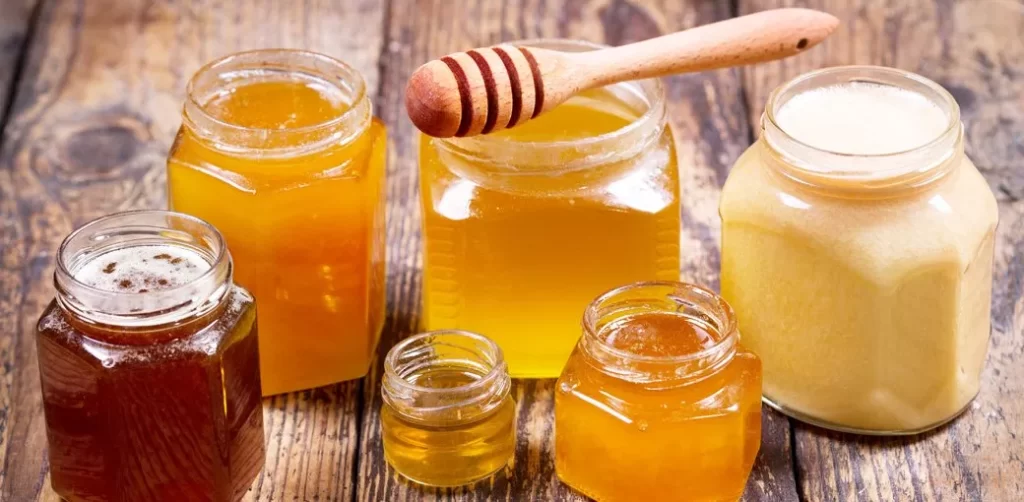Honey is a natural resource with long-lasting properties—if you seal it properly and store it for hundreds of years, it can still be eaten. Even though it lasts this long, it still doesn’t stay as fresh as it did when it was first sealed.
As a beekeeper or honey consumer, you should be able to tell when your honey has gone bad. Here’s how you can handle it and ensure its quality.
Why Honey Lasts
If you want to know how honey spoils, you need to know what makes it durable. The reason why honey can be stored for so long mainly has the following three characteristics:
- The sugar content is higher than the water content.
- Antibacterial enzymes produced by bees.
- Acidic properties
Honey Is Higher In Sugar Than Water
Honey is 80% sugar and 18% moisture. Its high sugar content helps prevent the growth and reproduction of microorganisms such as fungi and bacteria.
Here’s how it works – the high sugar content in honey causes its osmotic pressure to be high. This causes an osmotic effect, forcing the water out of the microbial cells.

Since the water content is very low, the high sugar content can interact with the water molecules and make it impossible for microorganisms to survive. In short, due to the low moisture content in honey, it does not break down.
Another thing to be aware of is that honey is too dense for microorganisms to grow and reproduce because oxygen does not readily dissolve in it.
Honey Contains Antibacterial Enzymes
The microbial enzyme in honey is glucose oxidase. Bees secrete enzymes into nectar to protect honey from microbes. Once the honey is mature enough, glucose oxidase converts the sugars in the honey into hydrogen peroxide and gluconic acid. Hydrogen peroxide can kill bacteria.
Honey Is Naturally Acidic
The pH of honey can be quite acidic as it ranges from 3.2 to 4.5 with an average pH of 3.9. The acidity of honey is due to gluconic acid, which is produced when the nectar ripens and after the bees secrete glucose oxidase in it.
Due to the acidity of honey, bacteria such as E. coli, Salmonella and Streptococcus cannot sustain life in honey.
Does Honey Go Bad?
Yes. Although honey has many antibacterial properties, it can still go bad and make you sick. There are several situations:
- Pollution
- Adulteration
- Incorrect save
- Long crystal
Pollution
There are two ways that honey can be contaminated with microorganisms:
- Natural pollution
- Man-made pollution
Natural Pollution
Some microorganisms are naturally present in honey:
- Bacteria
- Mold
- Yeast
These can come from the air, dust, dirt, flowers, pollen, or the digestive tract of bees. They do not grow or reproduce normally in honey and are only found in small amounts. As we discussed above, this is due to the antibacterial properties of honey. Therefore, these natural microorganisms are harmless to health.
However, in terms of lethality, this is not the case with Botox, which is also a natural contaminant of honey.
It is a neurotoxin that is harmless to adults but, in rare cases, can cause serious damage to the nervous system of infants as young as one year old. It can also cause breathing difficulties and paralysis in babies.
Man-Made Pollution
Secondary disturbances can also lead to contamination of honey. This could be due to the equipment used in processing by humans, insects, animals, wind or even water.
Adulterated Honey
Given the cost and time required to produce honey, companies are trying to adulterate it to reduce production costs and increase the number of products. This honey adulteration can be done by feeding bees syrup made from corn.
Feeding bees syrup is harmful to both bees and honey. Diseases can spread between bees when they feed close together.
Improper Storage Of Honey
If you don’t store honey properly, you can compromise its antibacterial properties. This can lead to contamination and spoilage of the honey. When honey is exposed to sunlight, its moisture content increases, giving microorganisms the resources to grow and reproduce.
Long Time Crystallization
There is no health risk if honey crystallizes, as it is a natural process that can happen even if you store honey correctly. It will only spoil if crystallized for a long time – this releases more water and fermentation occurs. You will notice this when the color of the honey turns white and opaque.
Fermentation is harmless but can cause honey to lose its flavor and attractive golden color.
How To Judge The Quality Of Honey?
When honey spoils, it turns cloudy yellow instead of clear gold – then the texture thickens and becomes grainy. Finally, once deemed “bad,” the color turns white and the texture hardens. This whole process is due to the crystallization of honey over a long period of time.
Another clue is that the honey has darkened in color and lost its aroma and flavor. This is due to the prolonged storage of honey.
When eaten in this state, it is not a health hazard, but it is no longer an attractive food.
In Conclusion
Honey is a natural resource that is not prone to spoilage due to its antibacterial properties. When honey spoils, you should have enough information to understand what caused it, whether through natural processes or human intervention.
Signs of spoiled or adulterated honey can be detected visually by the change in color and the thickness of the honey.

